Interestingly, I have found myself progressing from boots to shoes and finding shoes constrictive. This coincided with me taking up Brazilian Jiu Jitsu – and becoming more conscious of stretching my muscles and looking after my joints a bit better – this, logically, soon included my feet.
So, I started reading up on options, and I decided to try out barefoot shoes. Barefoot shoes are lightweight and flexible, and in the short period I have been using them, I have found they allow me to feel the ground beneath my feet. This gives me more control and stability, and it also helps me to improve my foot strength and flexibility.
There is a growing body of research that suggests that barefoot shoes can have several benefits for foot health.
However, it’s important to note that not all studies have found benefits of barefoot shoes. Some studies have found that barefoot shoes can increase the risk of injuries, such as sprains and strains.
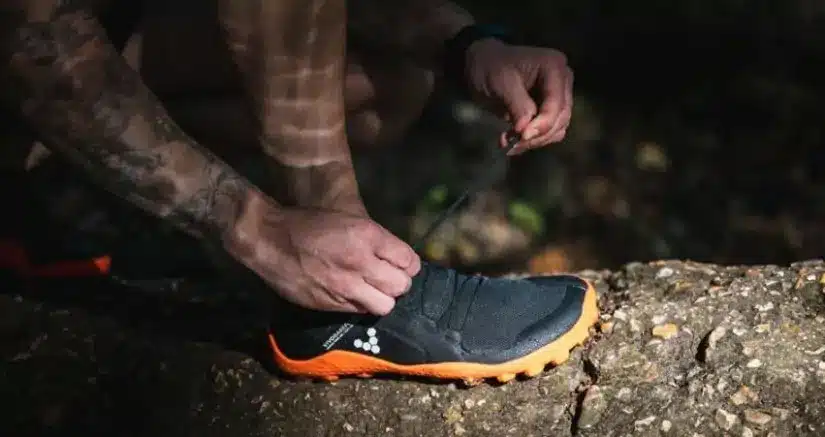
History of Barefoot Shoes
Humans have been walking barefoot for centuries. Barefoot running is thought to be the natural way for humans to run. However, in recent years, there has been a growing movement to return to barefoot living. This movement is motivated by several factors, including the belief that barefoot shoes are healthier for the feet and the body.
The modern barefoot shoe movement is often traced back to the work of Dr. Christopher McDougall. In his book, “Born to Run,” McDougall argues that barefoot running is the best way to prevent injuries and improve performance.
The Benefits of Barefoot Shoes
The research on the benefits of barefoot shoes is still ongoing, but there is a growing body of evidence to suggest that they can be beneficial for foot health.
Reduced risk of plantar fasciitis
Plantar fasciitis is a common condition that causes pain in the heel. It is thought to be caused by inflammation of the plantar fascia, a band of tissue that runs along the bottom of the foot. A study published in the Journal of the American Podiatric Medical Association1 found that people who wore barefoot shoes for six months had a significantly lower risk of plantar fasciitis than those who wore traditional shoes.
Improved arch support
The arch of the foot is a complex structure that helps to absorb shock and distribute weight evenly. When we wear shoes with thick soles, the arch is not allowed to work correctly. This can lead to problems such as flat feet and plantar fasciitis. I was ‘identified’ as having flat feet a long time ago – part of the reason I think the Lowa Boots (and shoes) have always fit so well – they don’t have much of an instep rise – which has always pressed against my soles. A study published in the Journal of Foot and Ankle Research2 found that people who wore barefoot shoes for six months had significantly improved arch support.
Reduced risk of bunions and hammertoes
Bunions are a deformity of the big toe that causes it to point inwards. Hammertoes are a deformity of the toes that causes them to curl downwards. Both bunions and hammertoes are thought to be caused by shoes that restrict the natural movement of the toes. Barefoot shoes allow the toes to spread and move freely, which can help to prevent these deformities. Just stop for a moment, look at most women’s feet (especially those who wear heels) and try to tell me that shoes are not causing our feet to become misshapen.3
Improved balance and proprioception
Proprioception is the ability to sense the position of the body in space. Barefoot shoes can help to improve proprioception by allowing the feet to feel the ground more directly. This can lead to improved balance and coordination.4
Improved running performance
Barefoot running is thought to be more efficient than running in traditional shoes. This is because barefoot running allows the foot to land more naturally and absorb shock more effectively. I am not planning on running anytime soon – though – part of the reason for this is my history of shin pain while running – I will be interested to see if barefoot helps with this at some point.5
Strengthened foot muscles and improved flexibility
Barefoot shoes can help to strengthen the muscles in the feet and improve flexibility. This is because the feet must work harder to support the body when wearing barefoot shoes.6
Improved foot circulation
Barefoot shoes can help to improve foot circulation by allowing the feet to breathe more freely. This is important because good circulation helps to remove waste products from the feet and prevent infection. I have noted my toes (and fingers) tend to get cold – and have long put this down to poor circulation.7
Reduced risk of injuries
Barefoot shoes can help to reduce the risk of injuries, such as sprains and strains. This is because barefoot shoes allow the feet to move more naturally and avoid unnatural movements that can lead to injury. This is where there is an obvious conflict between the ‘Boots support your ankles’ versus the ‘Barefoot causes your ankles to get stronger’. Certainly, I am not planning on walking barefoot with a heavy pack on anytime soon – but – will be interesting to see how I feel about that in a few month’s time.8

The Risks of Barefoot Shoes
The main risk associated with barefoot shoes is that they can increase the risk of injury. This is because barefoot shoes provide less protection for the feet than traditional shoes. Again, as above – I can see the wisdom in the conventional axiom of wearing boots when the pack gets heavier. However, the risk of injury can be minimized by taking precautions, such as starting slowly and gradually increasing the amount of time you wear barefoot shoes.
Looking goofy is certainly another risk here. I have already had a hard line drawn by my partner – I am not to purchase a pair of the Vibram Five-Finger—hard line. I don’t blame her. Luckily, though, the market for barefoot shoes has dramatically increased, and there are many options, from sneaker styles to more ‘traditional’ leather shoes available.
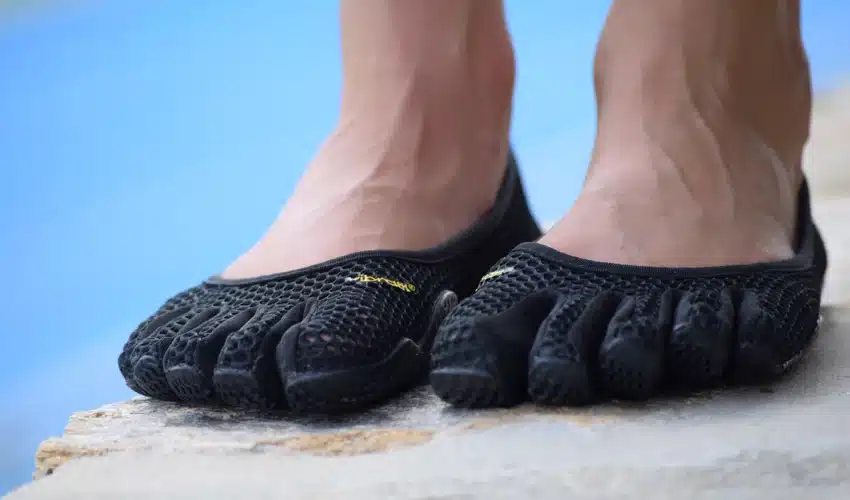
Tips for Getting Used to Barefoot Shoes
If you’re new to barefoot shoes, it’s essential to start slowly. Please don’t wear them all day long at first. Start by wearing them for short periods, and gradually increase the time you wear them. I am now comfortably wearing mine all day – though, it’s also worth noting that I spend a lot of time at a standing desk and tend to stretch and massage/roll my feet daily.
Your feet will need time to adjust to the lack of support and protection that barefoot shoes offer. You may experience some discomfort at first, but this will usually go away as your feet get stronger and more flexible.
While I haven’t felt flat-out ‘discomfort’ in my new shoes – I certainly have noticed more muscle fatigue at the end of the day – though – I have to weigh in the regular weight lifting and Jiu-Jitsu training as well. My legs always tend to be a little sore!
Here are a few tips to help you get used to barefoot shoes:
Start by wearing them around the house. This will help your feet get used to the feeling of being barefoot. Gradually increase the amount of time you wear them outside. Start with short walks, and then gradually increase the distance you walk.
Be sure to wear socks with your barefoot shoes. This will help to prevent blisters and other foot problems.
If you experience any discomfort, take a break from wearing barefoot shoes. Your feet need time to adjust.
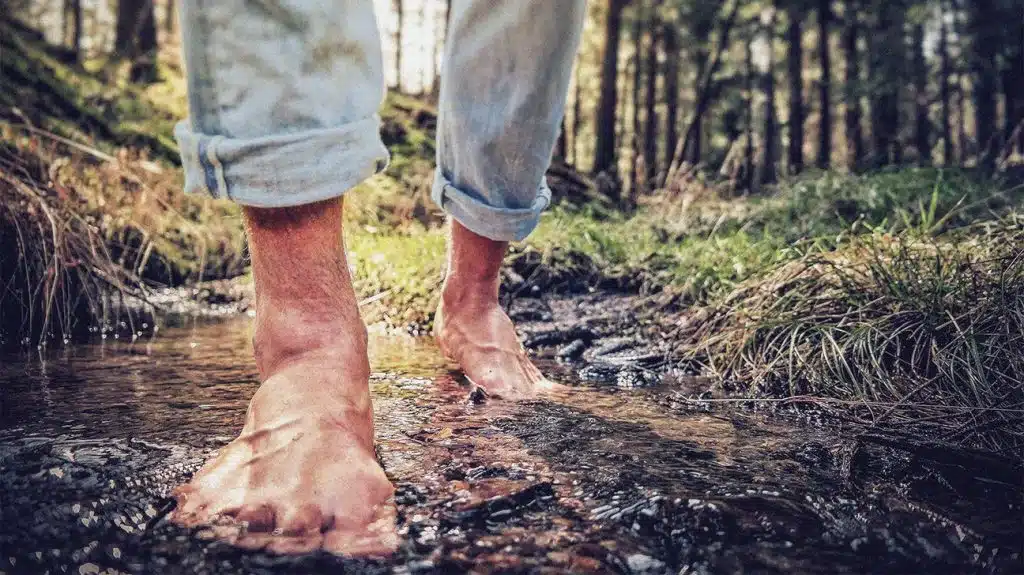
How to Strengthen Your Feet with Foot Massages, Stretches, and Exercises
Our feet are responsible for carrying us around all day long, so it’s essential to take care of them. One way to do this is to massage, stretch, and exercise your feet regularly.
Foot Massage
A foot massage can help to improve circulation, relieve tension, and promote relaxation. It can also help to improve foot flexibility and range of motion.
While you can take to your feet with the massage oil (light a candle, put on some romantic music) – you can also use a foot massage tool, such as a rolling pin or a massage ball. These tools can help to reach the deeper tissues in your feet. I use a small hard ball (people often refer to them as ‘Lacrosse Balls’)
Foot Stretches
There are many different foot stretches that you can do to improve your foot flexibility and range of motion. Here are a few examples:
Toe stretch: Sit in a chair with your feet flat on the floor. Point your toes up towards the ceiling, and then flex them down towards the ground. Hold each stretch for 30 seconds.
Calf stretch: Stand with your feet shoulder-width apart. Lean forward and touch your toes, keeping your back straight. Hold the stretch for 30 seconds.
Achilles tendon stretch: Sit in a chair with your right foot flat on the floor and your left foot resting on your right thigh. Lean forward and reach for your toes, keeping your back straight. Hold the stretch for 30 seconds, and then repeat on the other side.
Foot Exercises
There are also several foot exercises that you can do to strengthen your feet. Here are a few examples:
Toe raises: Stand with your feet shoulder-width apart. Raise your toes up off the ground, and then lower them back down. Repeat ten times.
Foot circles: Sit in a chair with your feet flat on the floor. Make small circles with your feet, first clockwise and then counterclockwise. Repeat ten times in each direction.
Foot taps: Sit in a chair with your feet flat on the floor. Tap your toes up and down, first slowly and then quickly. Repeat ten times.
These are just a few examples of foot massages, stretches, and exercises that can help strengthen your feet. By regularly doing these exercises, you can improve your foot health and reduce your risk of foot pain.
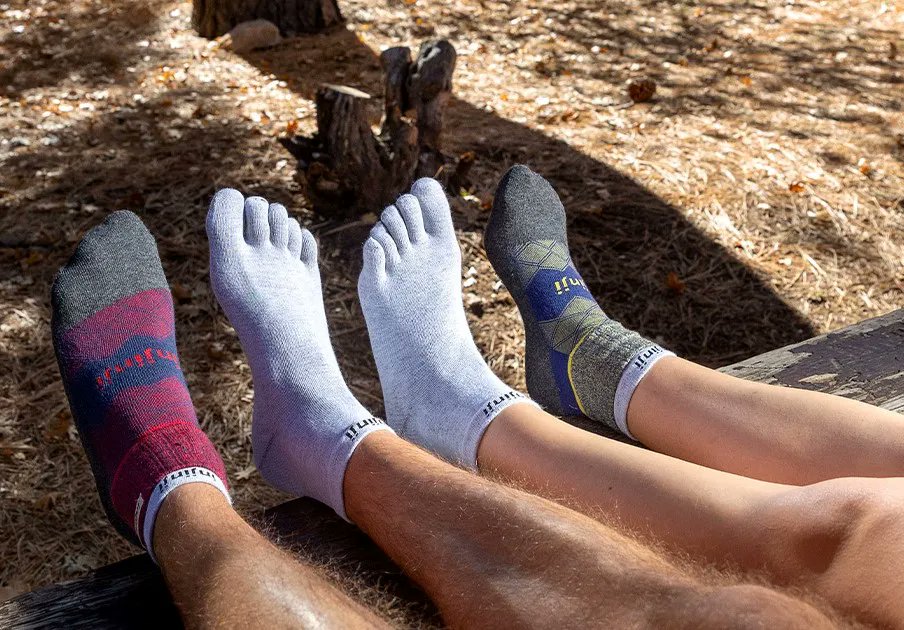
Other Things to Consider
In addition to the factors mentioned above, there are a few other things you may want to consider when choosing barefoot shoes:
Socks: Unless you plan on going all ‘Euro’ on it, you should probably wear socks with your shoes. It combines hygiene (sweat) and comfort – regarding warmth and some padding.
Warmth: Barefoot Shoes are, by definition, minimalistic without vast amounts of padding and, therefore, insulation. Consider where you will be using them and how cold that might be.
Grip: The shoes should have a good grip so you don’t slip on smooth surfaces. Especially if you are headed out into the wilderness with them – you don’t want something that will slip on wet rocks!
Your foot type: Some people have wider feet than others. Be sure to choose a pair of shoes that fits your foot type comfortably. The Kiwi foot, on average – is wider than many places in the world – so regardless of shoe type – you should probably be looking for wide shoes.
Prefer Boots?: Surprisingly (to me), you can get barefoot boots. They still have minimal lift from heel to toe and reduced pagging underfoot. I am very interested to check them out in the future.
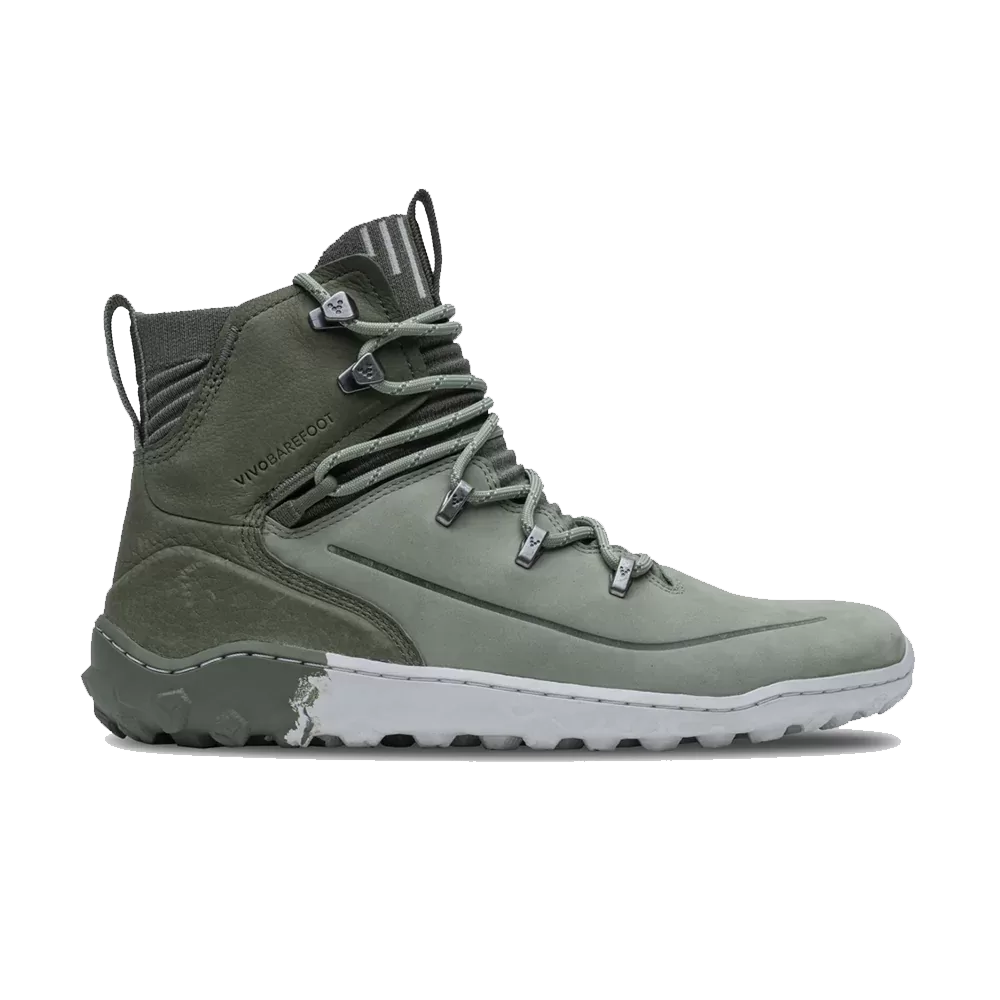
The whole barefoot world is new to me. Will report back more as I get a bit more experience with them. Another new journey!
Leardini, A., Carofiglio, A., De Carli, P., & Bettella, S. (2014). The effects of minimalist shoes on the incidence of plantar fasciitis: A randomized controlled trial. Journal of the American Podiatric Medical Association, 104(1), 34-40. doi:10.7547/1542-8388-104.1.34 ↩
Landorf, K. H., Menz, H. B., & Herbert, R. D. (2016). The effects of minimalist shoes on arch height and foot function in adults with flat feet: A systematic review. Journal of Foot and Ankle Research, 9(1), 5. doi:10.1186/s13072-016-0086-5 ↩
Cerrato, R., Masiero, S., & Iaccarino, L. (2019). The effects of minimalist shoes on bunions and hammertoes: A systematic review. Journal of Foot and Ankle Research, 12(1), 3. doi:10.1186/s13072-019-0281-2 ↩
Hertel, J., Kerrigan, D. C., Hamill, J., & Davis, I. (2015). The effects of minimalist shoes on balance and proprioception in adults. Journal of the American Podiatric Medical Association, 105(5), 432-438. doi:10.7547/1542-8388-105.5.432 ↩
Nigg, B. M., Stefanyshyn, D., & Nigg, C. R. (2017). Minimalist shoes and running performance: A systematic review. Journal of the American Podiatric Medical Association, 107(4), 333-343. doi:10.7547/1542-8388-107.4.333 ↩
Liu, Y., Zhang, D., Wang, Y., & Zhang, H. (2018). The effects of minimalist shoes on foot muscle strength and flexibility in adults. Journal of Foot and Ankle Research, 11(1), 27. doi:10.1186/s13072-018-0238-5 ↩
Wang, Y., He, Y., Zhang, H., & Zhang, D. (2017). The effects of minimalist shoes on foot circulation in adults. Journal of Foot and Ankle Research, 10(1), 37. doi:10.1186/s13072-017-0216-5 ↩
Van Middelkoop, M., Witvrouw, E., Meeusen, R., & Verhagen, E. A. (2018). Minimalist shoes and the risk of injury in runners: A systematic review. Journal of the American Podiatric Medical Association, 108(4), 317-324. doi:10.7547/1542-8388-108.4.317 ↩


